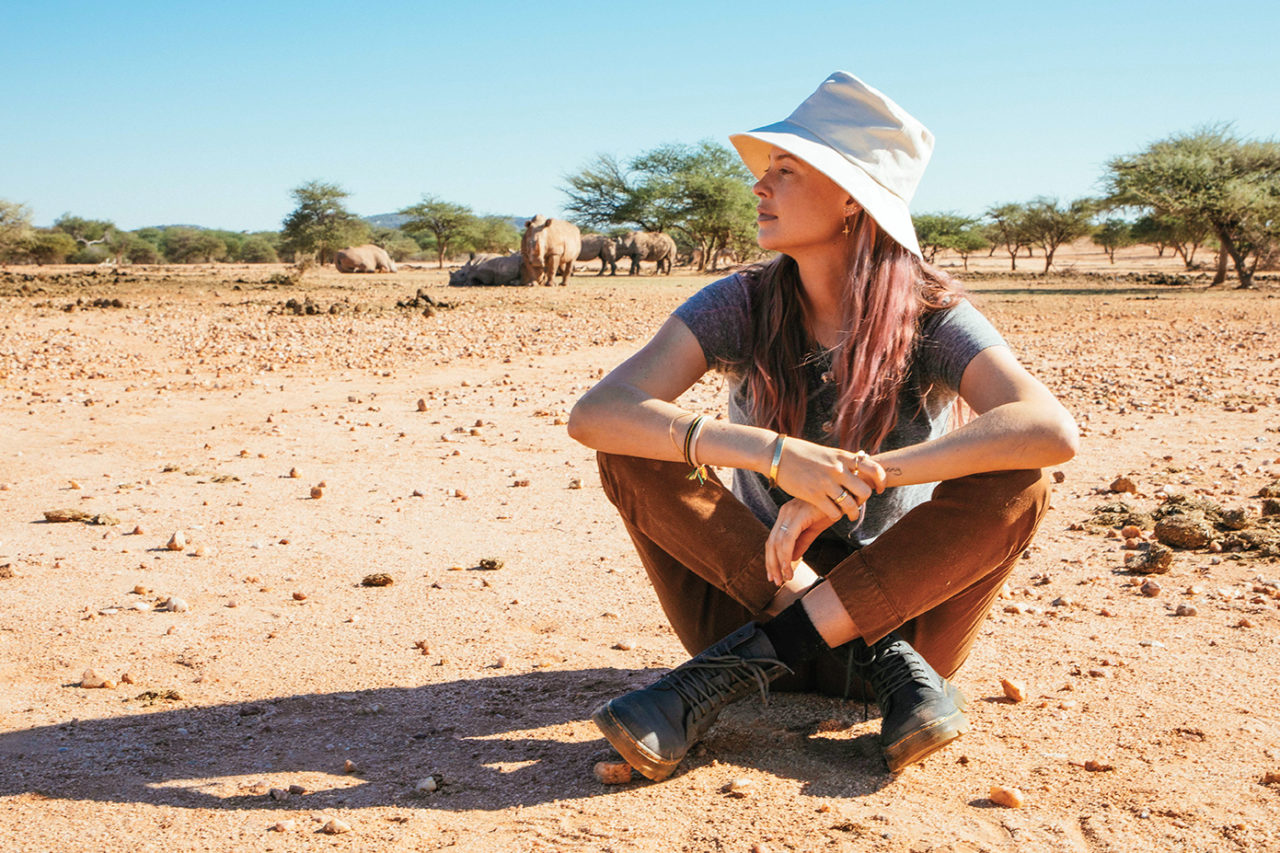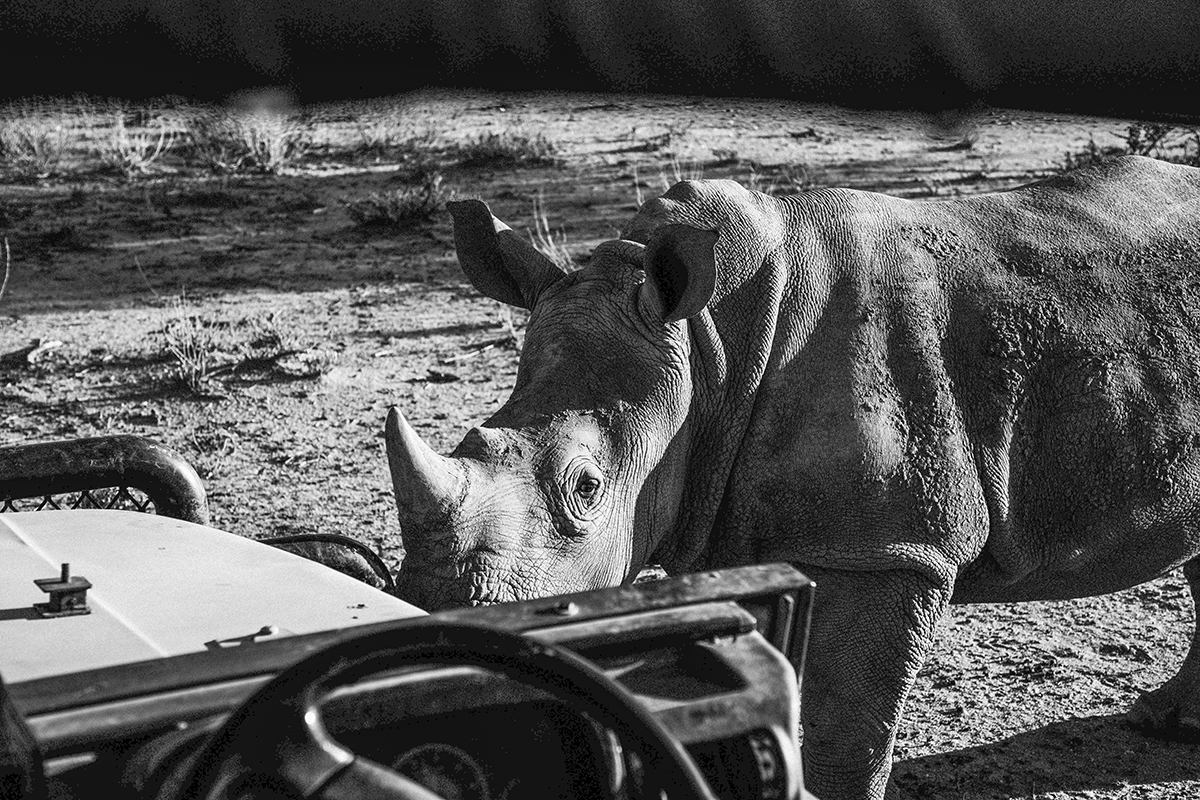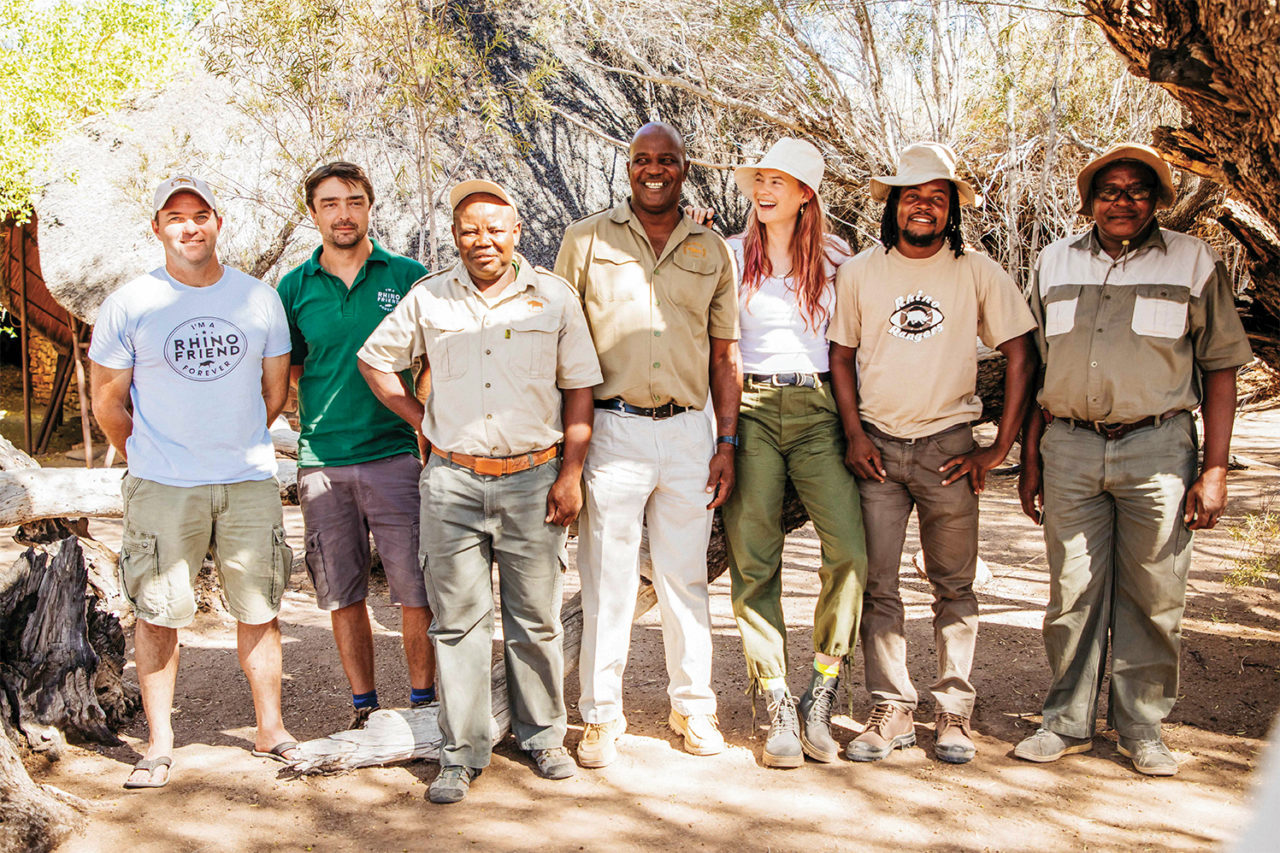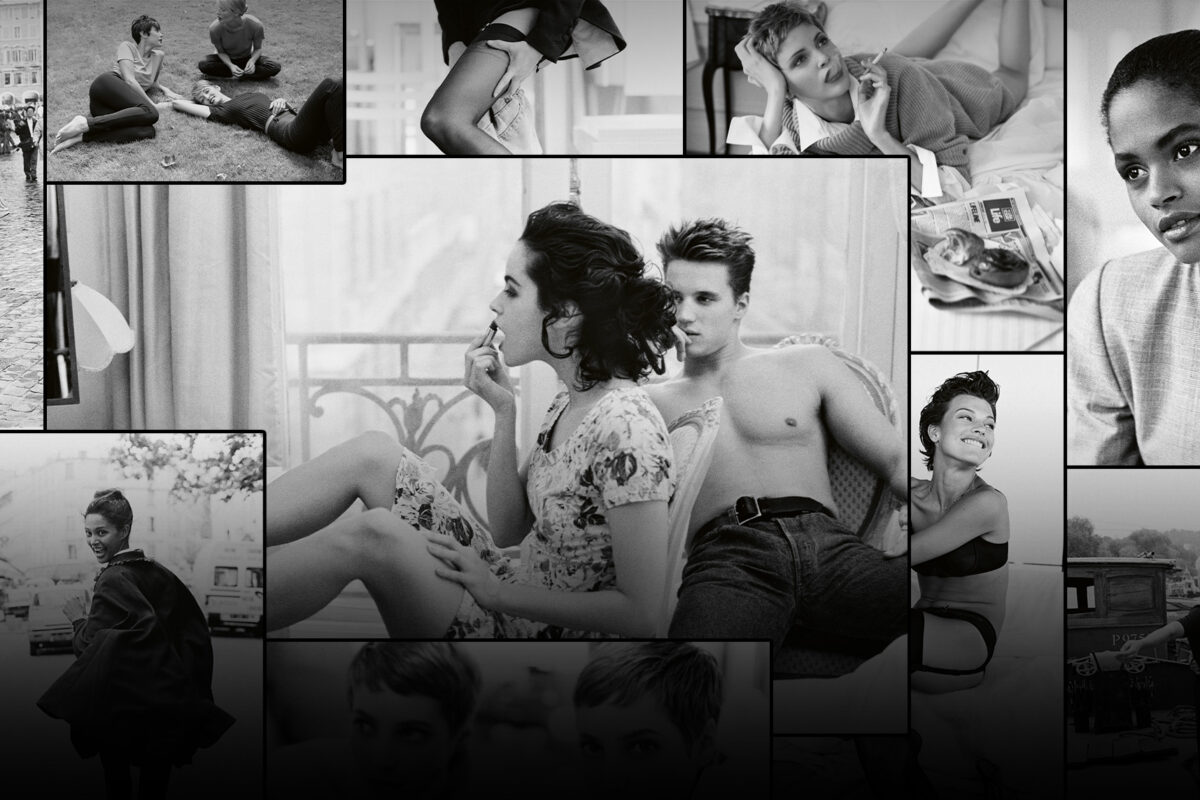The Namibia-born supermodel recently returned to her home country to raise awareness and experience the conservation work firsthand
As told to KATHRYN ROMEYN
Growing up, I remember going on safari, going camping — we were always going somewhere. My life was filled with adventure and, especially, animals. After leaving Africa, I realized rhinos were kind of the stepchild in the world of conservation (playing second fiddle to other animals like elephants and big cats), and right now they’re in a critical place. Two subspecies of rhino have recently gone extinct.
Namibia is the only country in the world that has free-roaming black rhinos remaining, and Save the Rhino Trust (SRT) asked if I would be interested in seeing them. So, with a few friends, including photographers Hugh Lippe and Travis Schneider, I went for a whirlwind 10-day trip, starting with a visit to conservationist Annette Oelofse at Mount Etjo Safari Lodge. She’s incredible — she raises orphan rhinos whose moms have been poached, and she puts them back into the wild. One had her eighth calf while we were there, which is just an awesome story about saving one rhino and ending up with eight babies.
“I was enamored with the beauty of these massive animals roaming freely”
Behati Prinsloo
We really studied these white rhinos — they’re much bigger than black rhinos, but it struck me how curious and gentle they are; if you’re still, they’ll come smell you out. These animals who are killed for their horns — which is literally just keratin — still trust humans.
Then we went on to Wilderness Safaris’ Desert Rhino Camp, where SRT trackers are based. It was so cool to see how they track a rhino in this hot, arid desert that looks like the moon. They put in amazing dedication in difficult conditions every single day — there hasn’t been a poaching in that area for about two years now! It can take all day to track a rhino here, and sometimes you don’t succeed, but we walked a couple hours with trackers to find a black rhino sleeping under literally the only bush for miles. There’s nothing more grounding. I was enamored with the beauty of these massive animals roaming around freely.
We drove a few hours to Wilderness Safaris’ Damaraland Camp, where we were lucky to see desert elephants, which I’d never found while I was growing up! The food and hospitality at these eco camps made me so happy — the staff sang us songs every night. My parents met us at Ongava Game Reserve, outside Etosha National Park (close to where I grew up), where we stayed at Little Ongava and Anderssons. The reserve has custodianship of black rhinos (originally there were six animals, but now there are 10 generations) relocated from an overpopulated area, but I noticed drought was causing herbivores, especially, to suffer. Between poaching and global warming, I really saw what humanity is doing to the planet and animals. We all need to make a change.
I want my girls to grow up in a world that has rhinos and elephants and lions in the wild. We have a responsibility to keep them on this planet. This trip was so emotional, I finally found my second calling. Africa feels so untouchable until you go there, then it steals your heart and a part of you will always stay. It really feels like a love affair.
Feature image: BEHATI PRINSLOO sits in front of a spectacular acacia tree in Namibia’s Abu-Huab riverbed. All photos by Travis Schneider.
This story originally appeared in the December 2019 issue of C Magazine.
Discover more TRAVEL news.






